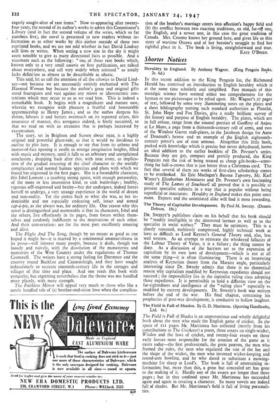Shorter Notices
IN this recent addition to the King Penguin list, the Richmond Herald has contrived an introduction to English heraldry which is at the same time scholarly and simplified. Past Manuals of this nostalgic science have seemed either too comprehensive for the layman or too picturesque to he relied upon. Mr. Wagner's 27 pages of text, followed by some very illuminating notes on the plates and a short bibliography naming such standard authorities as Planche, St. John Hope and Fox Davies, give a really brilliant survey of the history and purpose of English heraldry. The plates, which are in full colour, range from the enamel portrait of Geoffrey. of Anjou at Le Mans, a page from -a thirteenth-century roll of arms, and two of the Windsor Garter . stall-plates, to the Jacobean design for Anne of Denmark's hearse and an example of the English eighteenth- century potter's use of coat armour. Altogether this little book, packed with knowledge which is precise but never dehydrated; forms an ideal addition to the earlier booklets of- Dr. Pevsner's series. Because they are gay, compact and prettily produced, the King Penguins run the risk of being treated as cheapgift-books—some- thing for half-a-crown that is just better than a Christmas card. The fact that several of them are works of first-class scholarship comes to be overlooked. Sir Eric Maclagan's Bayeux Tapestry, Mr. Karl Winter's Elizabethan Miniatures and Dr. Pevsner's own fascinating study of The Leaves of Southwell all proved that it is possible to present specialist subjects in a way that is popular without being superficial or inaccurate. Heraldry in England makes this point once more. Experts and the uninitiated alike will find it most rewarding.


































 Previous page
Previous page